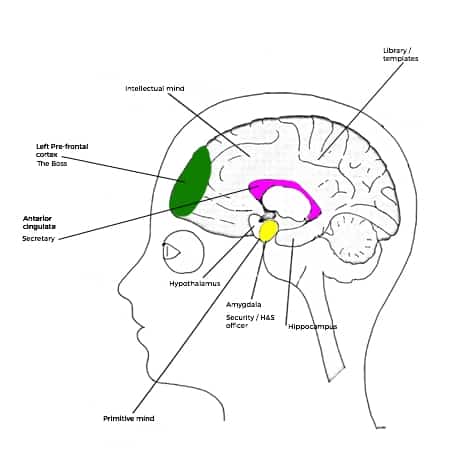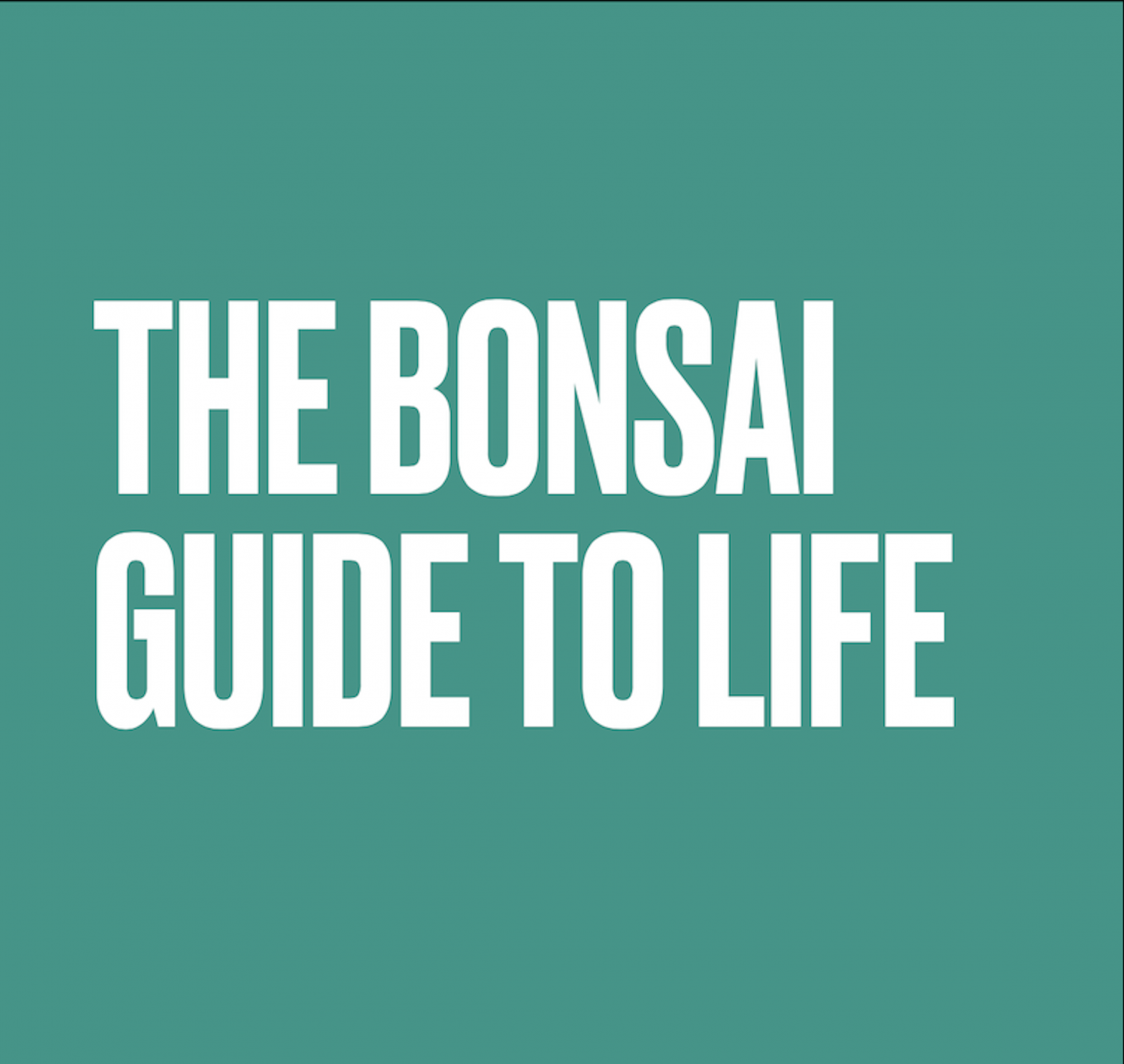The Prevention Programme
Part 1: What is a panic attack?
Hundreds of thousands of years ago a panic attack was a very useful thing. We led much more physically challenging and dangerous lives then. We didn’t have the sharp teeth or claws that our animal enemies had and so we had to be able to react very quickly to a threat. And in those days there were two simple choices. We could either run or, if desperate enough, we could fight. In this case, a panic attack is called the ‘fight or flight response’. You may well have heard of it.
The Fight or Flight Response
The fight or flight response can be seen as one of the most important parts of our make-up – a highly efficient survival response for dangerous times. Back then, threats were simple and straight forward but often very dangerous – a wild animal, or member of an enemy tribe for instance.
That is why the mind of a human being can trigger a panic attack fast and unconsciously. This is highly important. People who suffer panic attacks often report that “they come from nowhere” and this is an essential part of the fight or flight response.
Faster Than the Speed of Thought!
If you are in a threatening situation and you have to think before getting the hormonal changes associated with the flight or fight response, it may well be too late. Alternatively, you might make the wrong choice, so the unconscious part of our mind takes care of it. And of course, in a survival situation, it is better to respond as if danger is present when it’s not, rather than the other way round. Much safer to err on the side of caution!
This is the part where your digestion, blood pressure and body temperature are controlled and monitored by the brain. These functions generally occur outside of awareness. A panic attack is also controlled largely unconsciously, hence the feeling that they ‘come from nowhere’.
If it is unclear how this relates to a panic attack in a supermarket, or in the street, then soon this will become clear. That’s the evolutionary reasons for panic, but what is actually happening to the body during a panic attack? Why does it feel so strange?
What happens during a panic attack?
Well, several things happen as your body alters its priorities from long term survival to emergency short term survival. In response to the release of hormones such as adrenaline, your blood pressure increases and breathing speeds up preparing you for muscular effort.

Your legs may shake as they are prepared for running; your hands may shake as the large muscles of your arms are prepared to fight. Your palms and feet may become sweaty to give you better grip.
Blood is shunted away from the stomach to the major muscle groups where it will be used during an emergency. This is why people who experience regular stress often have digestive problems, IBS for example: blood is constantly being pumped to areas other than the stomach and digestion is put on hold, the process of moving food through the intestines simply stops, the valves responsible for the movement of food through your system close.
Other changes that occur during a panic attack, or the fight or flight response, are that the pupils dilate to let in more light, so we can gain more information about the situation. You may also feel like vomiting or defecating, which too can be seen to have survival value. If you vomit or defecate then this is the primitive response to ensure you are lighter, enabling you to run from an attacker and making you less appetising as a potential meal!
Remember… all these responses have survival value in the sort of circumstances that they originally evolved for. So why is it that so many of us experience a panic attack in a comparably safe modern environment?
Part 2: Why do we have them?
So why is it that so many of us experience feelings of panic in a comparably safe modern environment? The answer is to be found in our history.
Their Place in the Modern World
Human evolution has taken approximately 135 million years. Modern life can only be said to have existed for the last ten thousand years or so – less than one thousandth of one percent (.001%) of our evolution. This is not nearly long enough for us to adapt. So, in a very real sense, we are stuck in a modern world using ancient tools.
The ‘Trip-wire’
Now this is all very well, but it doesn’t explain why one person has a panic attack while another doesn’t or why we can suddenly just start to have them. For the answer to this question, we must look at the stress levels in our lives.
Remember – stress is caused by the way we react to a situation. When a person is generally stressed, or anxious, the sensitive ‘trip-wire’ which is the fight or flight response is more easily triggered.
The Unconscious Mind is a Quick Learner
Once a panic attack has happened in a situation, the mind can quickly learn to fear the situation itself. The panic response can be ‘conditioned’ to be triggered by the situation or environment. So, too much ongoing day-to-day stress can prime this ‘trip-wire’ causing it to go off like a faulty car alarm every time someone walks past it. We have matched up ‘faulty’ templates in our library and sometimes your Secretary might automatically put your Security Officer in charge before checking the library template first – this is known as taking the “Low Road”.
[This is the same mechanism that causes you to remember old memories when you hear a song, or smell a particular odour, although in this case your Secretary is checking the templates held in the library and this is taking the “High Road”.]
We can slacken our ‘trip-wire’ by making sure that we take enough time to relax every day. We’ve established that a panic attack is a response we all need sometimes. You can see your panic response as a guard whose job it is to protect you from harm. It needs to be there but it also needs to learn to distinguish between threatening and non-threatening situations, between friend and foe.

De-conditioning
Sometimes, once a person’s unconscious mind has learnt to ‘attach’ panic or anxiety to a certain situation, ‘desensitisation’, or ‘de-conditioning’ needs to take place. Essentially, this means returning the situation or memory to its original state, as non-emotional. This was traditionally done through ‘systematic desensitisation’ where a person is slowly re-introduced to the problem area.
These days, it is possible to de-condition memories, or panic situations, using a guided visualisation technique. If it is appropriate for your personal situation, l can help you by providing a couple of sessions that I call ‘Rewind and Reframe’ in order to de-condition the panic situations.
Agoraphobia and Panic Attacks
Some people, after having a panic attack, develop a fear of open spaces. This is known as agoraphobia and may appear as fear of being in crowds or busy places or just being outside the home. If we look at this from an evolutionary perspective it makes sense. Thousands of years ago we would have had to be careful of wide open spaces because of the possibility of being attacked by wild animals.
Agoraphobia can also develop as panic attacks ‘spread’ from one situation to another. As we saw above, panic attacks work via the unconscious mind. The unconscious ‘sees’ a pattern that was previously associated with panic, and assumes that it is appropriate to panic again.
Because this ‘template pattern match’ has to be approximate, mistakes can be made. So, for example, a lady I once treated had her first attack on a windy day. Her father had just died and she was already highly stressed due to her mother’s poor health at the time.
At the office the following week she had another attack. She was sitting at her desk, surrounded by people; her unconscious mind decided that this was ‘the same’ as the gale that this was attempting to get through to get home, like all the other people around her at rush-hour, where she had been surrounded by people) and this triggered a second occurrence. It’s not too hard to see how this could continue to spread to other perhaps public transport, supermarkets and more places where there were several people.
Once your panic attacks stop then your mind and body will get the message that the former panic situations are no longer real threats.
Part 3: The Core Beliefs that Fuel Anxiety and Panic Attacks
Although people having panic attacks often feel as if they are the only ones in the world with the problem, the thoughts that accompany panic attacks are usually very similar. Here are the most common ones that we can encounter.
Thought 1: “I might die from a heart attack”
Although it may not feel like it at the time, the heart is designed to react in the way it does during a panic attack. It can feel unnatural because this type of heart activity is usually reserved for vigorous activity, when you don’t notice it as much. However, unless you have a heart condition, it is not usually a threat to the heart. If you are worried about this, see your GP and get tested – if he gives you the all-clear then your heart is okay.
Thought 2: “I might die from suffocation”
It may not feel pleasant, but you are less likely to suffocate during a panic attack than at any other time because you naturally take in more air.
The shortness of breath you may feel is due to your body increasing its demand for oxygen, or because of hyperventilation or over-breathing, see part 4.
Thought 3: “I’m having a stroke”
When you don’t understand what is happening to you, it’s perfectly natural to try and explain in it terms you understand.
However, strokes have nothing to do with panic attacks, so you can relax about that! However, if you are worried about it, see your G.P. and get yourself checked – it is possible to assess if you have had a stroke.
Thought 4: “I’m scared of fainting”
Fainting is not an option when being chased by a wild animal, in fact it could be fatal, so it is highly unlikely that panic will cause fainting.
And what if you did faint?
How bad would it be? The end of the world? Worse than death itself? Probably not!
Fear of fainting often comes about due to the sense of dizziness which accompanies hyperventilation, sometimes part of panic.
Thought 5: “I’m having a nervous breakdown, or going ‘crazy’”
If you were really going insane would you be aware or worried about going insane? When people really break down, they rarely realise and often feel that they are okay and that it is the others who are strange.
You already know that the anxiety, panic, or ‘fight or flight’ response is a natural mechanism, so this one doesn’t even figure.
Thought 6: “Losing control”
When having an anxiety attack, it can feel like you have lost control.
In fact, all that has happened is that control has shifted from your conscious to your unconscious mind, so things are still being regulated, just differently. Your Boss is out to lunch and your Security Officer is taking charge. Remember, how would a large multi-million company run if the guy on the door who checks visitors in was in charge – would it be as in order as when the MD is up there doing his bit?
Thought 7: “Feeling so weak you can’t move or may fall down”
The feeling of weakness is caused by the shaking we mentioned earlier – surfeit of adrenaline that is not being used, just ‘waiting’ in your muscles waiting for that ‘call to action’. In fact, you are actually stronger when panicking than at any other time as your large muscles are being supplied with plenty of oxygen – it’s why we can hear of these prodigious feats of strength in times of extreme danger or emergency.
Thought 8: “Belief that you’re going to be embarrassed”
How many times have you actually been humiliated or embarrassed by a panic attack?
If you ever have been, was it really that bad?
During an attack, it is very common and quite natural to worry that your body can’t take what is happening. The fact is that panic is a short-term response.
The worst part of a panic attack only lasts a few minutes although unpleasant anxiety feelings can persist for longer. It is similar to a fire or emergency drill for the body. If you have panic attacks then at least you know that your anxiety or fight or flight response is in good working order!
Part 4: The symptoms – Hyperventilation or ‘over breathing’
Quite possibly you have already recognised several symptoms that you may well have suffered and now something that often makes panic attacks much worse – hyperventilating or over breathing. It can be counted amongst panic attack symptoms, or amongst causes, as one ‘feeds’ off the other.
About 60% of attacks are accompanied by hyperventilation and most people who experience a panic attack then to over breathe, even whilst relaxed.
The most important thing to understand about hyperventilation is that although it can feel as if you don’t have enough oxygen, the opposite is true. It is a symptom of too much oxygen.
With hyperventilation, your body has too much oxygen. To use this oxygen (to extract it from your blood), your body needs a certain amount of Carbon Dioxide (CO2).
When you hyperventilate, you do not give your body long enough to retain CO2, and so your body cannot use the oxygen you have. This causes you to feel as if you are short of air, when actually you have too much. This is why the following techniques work to get rid of hyperventilation.
Some hyperventilation and panic attack symptoms are:
- Light headiness
- Giddiness
- Dizziness
- Shortness of breath
- Heart palpitations
- Numbness
- Chest pains
- Dry mouth
- Clammy hands
- Difficulty swallowing
- Tremors
- Sweating
- Weakness
- Fatigue
Getting Rid of Hyperventilation
Anybody who hyperventilates will find that symptoms of over excited-ness or panic will occur. So how can learn to breathe more evenly and naturally?
- Holding your breath for as long as you comfortably can will prevent the dissipation of carbon dioxide. If you hold your breath for a period of between 10 and 15 seconds and repeat this a few times that will be sufficient to calm hyperventilation quickly.
- This will cause you to re-inhale the carbon dioxide that you exhaled. Naturally there are many times when this would be inappropriate and may appear a little strange. It really helps though.
- Thirdly you can take vigorous exercise while breathing in and out through your nose. A brisk walk or jog whilst breathing through the nose will counter hyperventilation. Regular exercise will decrease general stress levels decreasing the chance of panic attacks.
- If you find that your breathing pattern is irregular or uncomfortable a lot of the time, the best way to ‘reset’ it is by exercising. Start off gradually and check with your doctor if you are not used to exercise.
The 7:3:11 Breathing Pattern – the opposite of hyperventilation
Finally you can practice a special type of breathing, not into your chest but deep into your tummy or diaphragm which is below your chest.
The important thing here is that the out breath must be longer than the in breath.
This causes stimulation of the part of your nervous system responsible for relaxation. This is a basic law of biology and if you breathe in this way then your body will have no choice but to relax.
It may take a few minutes but the body will respond regardless of what your mind is thinking.
Experience this now.
Sit down and close your eyes for a little while.
Just become aware of your breathing.
Breathe in to the count of seven.
Hold for the count of three.
Now breathe out to the count of eleven.
And repeat five times.
With practice slow the count until your count is 7 seconds, 3 seconds, 11 seconds.
It may be a little difficult at first, but doing this regularly causes your general anxiety level to come down. You may also find that you begin to breathe this way automatically if you feel anxious. Regular relaxation actually starts to inhibit the production of stress hormones in the body so it actually becomes harder and harder to panic. As you become more generally relaxed the ‘baseline’ of arousal from which you are starting lowers. It actually becomes harder to get stressed!
Hyperventilation responds very well to this technique. If you practice this daily, hyperventilating should cease to be a problem very quickly. It can also give you much more control over panic attacks.
You are hopefully coming to understand that panic attack symptoms are natural physiological reactions. Next, how a panic attack causes the brain to behave in a certain way…
Part 5: The Brain ‘Emotional Hijacking’
When you have a panic attack, or become very anxious your emotional response can actually bypass your ‘thinking brain’. The yellow area in the diagram is the amygdala, which is involved with creating a ‘faster than thought’ panic attack. (The ‘Low Road’). It is very difficult, or impossible, to think clearly when highly emotional because the part of the brain you think with is inhibited.
This is a very primitive part of your brain, designed for survival, rather than problem solving in complex situations. Modern man’s Amygdala is the same size as Cave man’s!
The most common comment from people who have panic attacks is ‘It’s totally irrational’, which is quite right. It’s not the rational part of the brain that deals with panic attacks. This is why people often find it hard to make decisions during a panic attack and why I don’t believe James Bond would think about or even embrace the heroine whilst running from the nuclear explosion…
This response has been termed an ‘emotional hijacking’ by Daniel Goleman, who wrote the best selling book ‘Emotional Intelligence’. By this, he means that your thinking, planning rational mind is hijacked by your emotional response.
The first sign that your panic attacks have gone may be when you notice you can’t have them any more. This is because something fundamental will have changed in the way the mind responds. As you become less stressed and more relaxed so you will regain your control. When we relax, we are in control and when we relax, we can do the things that we want to do.
Part 6: Other Techniques
Scaling Panic Attacks Down
The first technique is this: if you experience anxious or panicky sensations, you can rate their intensity from 1 to 10, full-blown panic being 10 and deep relaxation being 1.
So, for example, if you are in a situation and begin to feel uneasy you could say to yourself ‘I am now at a scale 5’. If you began to feel worse you might say inwardly ‘I am now at a scale 6’. As you begin to feel better, you can count yourself back down to a 2 or a 1.
By scaling anxiety attacks in this way, you are doing three things.
- You are ‘putting a fence’ around the experience so the limits are clear. After all, it’s impossible for panic to go up indefinitely. It has to level off.
- You are using the thinking part of the brain. In order to stop and think about where you are on a scale of anxiety you have to use your Boss; the part which is not so concerned with emotion but more with thinking.
- For the time it takes for you to grade the panic you are less ‘in’ the panic attack and more outside it. Rather like being an observer. This dilutes the emotional content.
- You can begin to get some better data on how long the anxiety attack lasts, how intense it is etc. This gives you more control. Although it can feel that panic attacks go on for ever, they can actually only continue for short periods – they are short-term survival responses.
The simple rule is that by giving the thinking brain a task we diminish the experience of unpleasant emotion.
It’s good to use a pen and paper to scale anxiety because then you can see how things are improving. It also gives you something to do during an anxiety attack although people sometimes find it a little difficult to write as the brain is concentrating on larger movements at these times, rather than fine ones.
Be AWARE of Panic Attacks
The next technique with which I would like to arm you is the AWARE technique.
So the ‘A’ in aware stands for ‘Accept the anxiety. Decide just to go with the experience. Fighting anxiety, getting angry or scared just fuels the fire. After reading these notes, you know a panic attack is a perfectly natural response, so although it can be frustrating, there is nothing to be afraid of.
The ‘W’ in aware is for ‘Watch the anxiety’ Observe it without judging it to be good or bad. Remember – you are more than just your anxiety.
The next ‘A’ in ‘aware is for ‘Act normal’. Behave normally and continue doing what you intended to do. Breathe normally focusing on extending the out breath (se 7:11 breathing). If you run from the situation your immediate anxiety will of course decrease but this may lead to an increase in future anxiety.
Staying in the situation helps ‘de-condition’ the panic response as your mind gets the message that it is not really threatening. This is why people often say that the first few minutes of public speaking are the worst. If you continue for longer than a few minutes then the mind gets the message that it’s not really that threatening.
The ‘R’ in ‘aware’ is for ‘Repeat the steps’. Continue accepting your anxiety, watching it and acting normal until it goes down to a comfortable level.
And finally the ‘E’ in ‘aware’ is for ‘Expect the best’. What you fear may never happen. You will surprise yourself by the effective way you handle situations when using the ‘AWARE’ technique.
Of course, getting rid of all anxiety is not desirable, or even possible, but getting rid of panic attacks is.
The next step in getting rid of panic or anxiety attacks for good is to re-educate the unconscious mind so that it understands that the situations that currently trigger your panic attacks are not actually dangerous. We can do this using simple and effective techniques within the consultation room.
Thanks for reading this article, for further information from the NHS click here.







